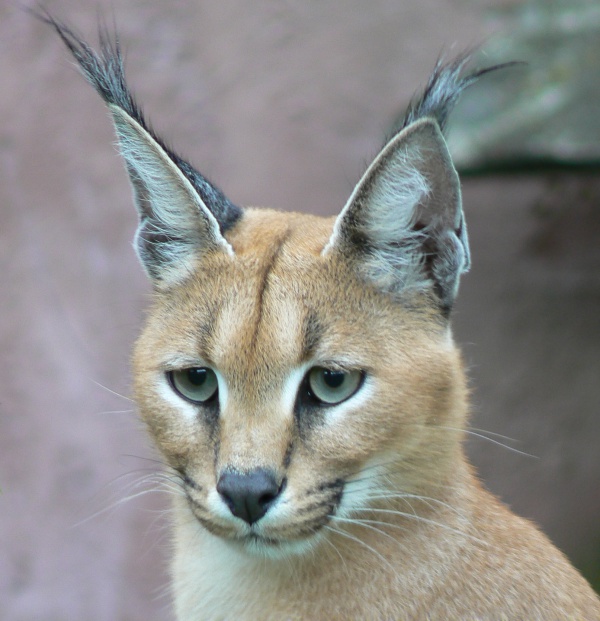Facts About Caracal
The caracal is a captivating medium-sized wild cat native to Africa, the Middle East, Central Asia, and India. Distinguished by its muscular build, long legs, and unique tufted ears, this feline is further set apart by its reddish-tan or sandy coat with lighter underparts. Caracals typically stand 40–50 cm tall at the shoulder and weigh between 8–18 kg. First scientifically described by Johann Christian Daniel von Schreber in 1776, three subspecies of caracals were recognized as of 2017.
Caracals are nocturnal, elusive, and territorial, often living solitarily or in pairs. As carnivores, their diet primarily consists of small mammals, birds, and rodents. Remarkably, they can leap over 4 meters to catch birds mid-flight. They stalk their prey until within 5 meters, then sprint to seize it, delivering a fatal bite to the throat or nape. Caracals reach sexual maturity at about one year old and have a gestation period of two to three months, typically giving birth to one to six kittens. The young leave their mother at around nine to ten months.
Historically, caracals were tamed for hunting, particularly in ancient Egypt. Taxonomically, they belong to the family Felidae and the subfamily Felinae, and are classified into three subspecies: the Southern caracal, the Northern caracal, and the Asiatic caracal. The caracal lineage diverged from other feline species approximately 2.93 to 1.19 million years ago.
The name 'caracal' is derived from a Turkish term meaning 'black-eared cat.' They are also known as desert lynx and Persian lynx. Their distinctive black facial markings, long ear tufts, and slender build make them easily recognizable. Caracals thrive in various habitats, from forests to semi-deserts, and are found in numerous countries across Africa and Asia.
Caracals are proficient hunters, known for their speed, agility, and remarkable leaping ability. They breed throughout the year, with females giving birth to litters that mature fairly quickly. However, caracals face threats such as habitat loss, hunting for livestock protection, and road accidents, prompting the need for conservation efforts.
Despite these challenges, the caracal is currently listed as Least Concern on the IUCN Red List. Different countries assign varying conservation statuses to the species, and efforts are underway to protect caracal populations through hunting regulations, protected areas, and other conservation initiatives.

 Western Sahara
Western Sahara